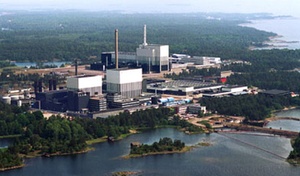
New Managing Director for Bellona Norway
The Board of the Bellona Foundation has appointed former Minister of Climate and the Environment Sveinung Rotevatn as Managing Director of Bellona No...
News

Publish date: October 24, 2011
Written by: Charles Digges
News
The fire broke out in the turbine hall of reactor No 2 and was quickly put out by the plant’s own emergency services, after which the reactor and the turbine were closed down as a precautionary measure.
The cause of the fire was said by OKG to have been caused by oil that leaked onto a hot surface, the Associate Press reported.
The fire touched off fears in Northwest Russia of a possible spread of radiation, where specialists were quick announce on Sunday that background radiation levels in the Leningrad Region and in the city of St. Petersburg remained normal, Fontanka.ru reported.
Environmentalists and other independent observers, using an interactive map created after the Fukushima disaster to chart radiation, corroborated official reports.
“Fires are always serious in this type of facility, but this happened in the conventional turbine hall and not in the reactor itself,” said Anders Osterberg, OKG communications director.
Reactor No 2 was restarted this week following its annual maintenance check, the Local said.
The Oskarshamn nuclear plant is located on Sweden’s south west coast, some 30 kilometers north of Oskarshamn. The plant’s three reactors produce about 10 percent of the country’s electricity.
Vladimir Slivyak, co-chair of Russia’s Ecodefence, told Fontanka.ru that this was not the first fire experienced by a Swedish nuclear power station.
A far more serious fire that threatened the integrity of a reactor at Sweden’s Forsmark facility in 2006, he said.
The fire at Oskarshamn, said Slivyak, “could have grown into something with very serious consequences had contemporary measures not been taken. The conclusion can be drawn that Sweden’s nuclear energy is far from safe.”
Slivyak said that prior to the Fukushima disaster of last March, Japan’s nuclear reactors were considered among the safest in the world.
In October 2008, fractures were found in the control rods of Oskarshamn’s reactor No 3, which led to a long maintenance blackout. Swedish Radiation Safety Authority called at the time for immediate inspections at Swedish plants sharing similar control rod designs. Inspections at Forsmark 3 revealed similar problems to those at Oskarshamn.
Earlier that same year, Oskarshamn became the centre of a security scandal when it was found that two subcontracted maintenance workers had gotten past checkpoints with a bag containing residue from explosives.
The two workers were released the next day, but suspicions about where the explosive residue had come from remains.
The incident provoked outrage from German Member of European Parliament Rebecca Harms who deplored the incident as showing up lax security at nuclear power plants.
Commissioned in 1972, the Oskarshamn plant has been a focus of environmental concern because of its location on the Baltic Sea on the country’s east coast.
Sweden has 10 nuclear reactors at three plants and the country’s parliament passed a landmark bill in June 2010 allowing the reactors to be replaced at the end of their life spans instead of simply ending nuclear power when they expire.

The Board of the Bellona Foundation has appointed former Minister of Climate and the Environment Sveinung Rotevatn as Managing Director of Bellona No...

Økokrim, Norway’s authority for investigating and prosecuting economic and environmental crime, has imposed a record fine on Equinor following a comp...

Our op-ed originally appeared in The Moscow Times. For more than three decades, Russia has been burdened with the remains of the Soviet ...

The United Nation’s COP30 global climate negotiations in Belém, Brazil ended this weekend with a watered-down resolution that failed to halt deforest...